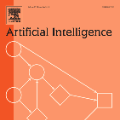The rapid development of artificial intelligence (AI) has significantly transformed human-computer interactions, making it essential to establish robust design standards to ensure effective, ethical, and human-centered AI (HCAI) solutions. Standards serve as the foundation for the adoption of new technologies, and human-AI interaction (HAII) standards are critical to supporting the industrialization of AI technology by following an HCAI approach. These design standards aim to provide clear principles, requirements, and guidelines for designing, developing, deploying, and using AI systems, enhancing the user experience and performance of AI systems. Despite their importance, the creation and adoption of HCAI-based interaction design standards face challenges, including the absence of universal frameworks, the inherent complexity of HAII, and the ethical dilemmas that arise in such systems. This chapter provides a comparative analysis of HAII versus traditional human-computer interaction (HCI) and outlines guiding principles for HCAI-based design. It explores international, regional, national, and industry standards related to HAII design from an HCAI perspective and reviews design guidelines released by leading companies such as Microsoft, Google, and Apple. Additionally, the chapter highlights tools available for implementing HAII standards and presents case studies of human-centered interaction design for AI systems in diverse fields, including healthcare, autonomous vehicles, and customer service. It further examines key challenges in developing HAII standards and suggests future directions for the field. Emphasizing the importance of ongoing collaboration between AI designers, developers, and experts in human factors and HCI, this chapter stresses the need to advance HCAI-based interaction design standards to ensure human-centered AI solutions across various domains.
翻译:暂无翻译




